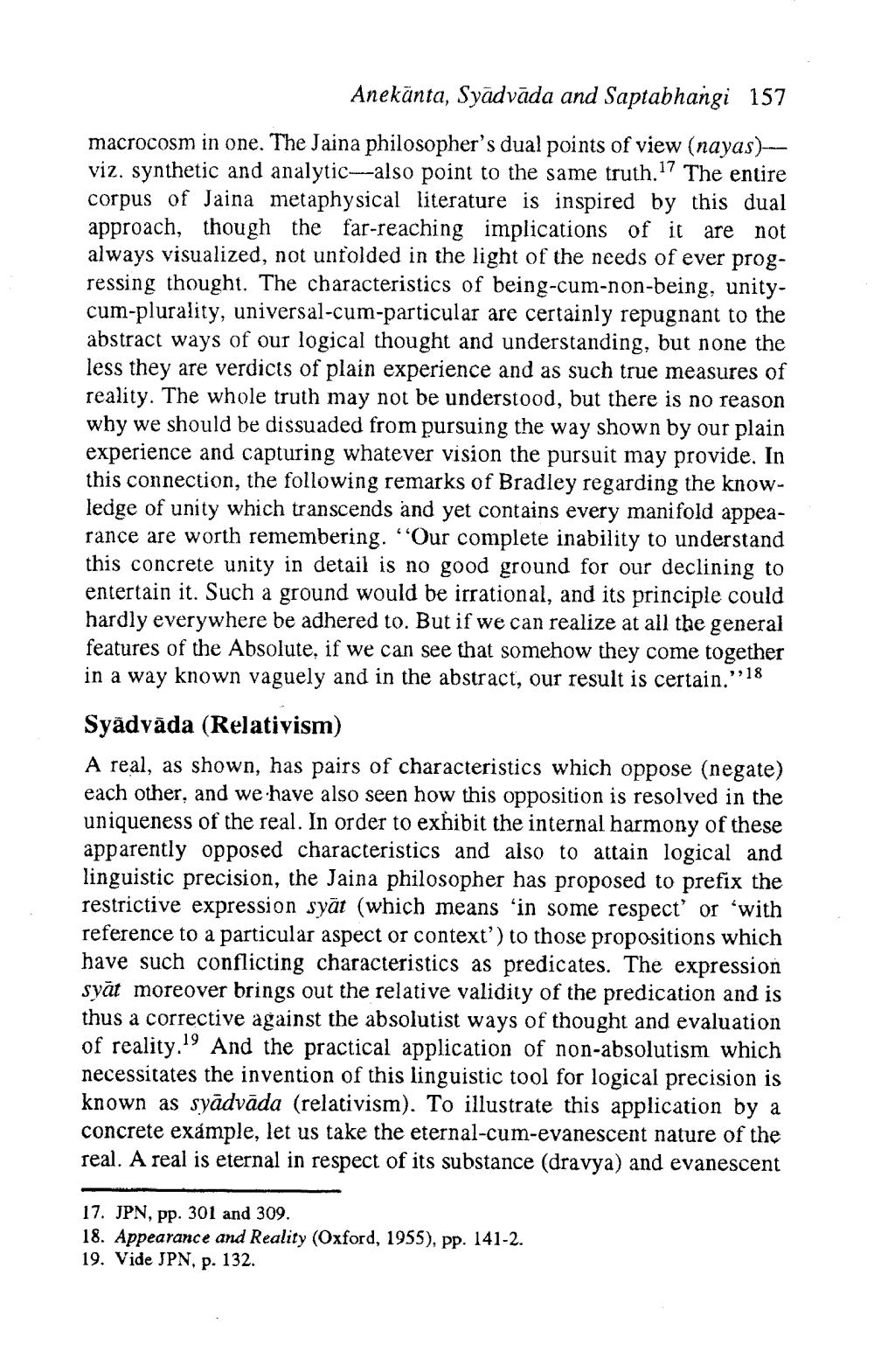________________
Anekanta, Syadvāda and Saptabhangi 157
macrocosm in one. The Jaina philosopher's dual points of view (nayas)viz. synthetic and analytic-also point to the same truth.17 The entire corpus of Jaina metaphysical literature is inspired by this dual approach, though the far-reaching implications of it are not always visualized, not unfolded in the light of the needs of ever progressing thought. The characteristics of being-cum-non-being, unitycum-plurality, universal-cum-particular are certainly repugnant to the abstract ways of our logical thought and understanding, but none the less they are verdicts of plain experience and as such true measures of reality. The whole truth may not be understood, but there is no reason why we should be dissuaded from pursuing the way shown by our plain experience and capturing whatever vision the pursuit may provide. In this connection, the following remarks of Bradley regarding the knowledge of unity which transcends and yet contains every manifold appearance are worth remembering. “Our complete inability to understand this concrete unity in detail is no good ground for our declining to entertain it. Such a ground would be irrational, and its principle could hardly everywhere be adhered to. But if we can realize at all the general features of the Absolute, if we can see that somehow they come together in a way known vaguely and in the abstract, our result is certain.") Syädväda (Relativism) A real, as shown, has pairs of characteristics which oppose (negate) each other, and we have also seen how this opposition is resolved in the uniqueness of the real. In order to exhibit the internal harmony of these apparently opposed characteristics and also to attain logical and linguistic precision, the Jaina philosopher has proposed to prefix the restrictive expression syāt (which means 'in some respect' or 'with reference to a particular aspect or context') to those propositions which have such conflicting characteristics as predicates. The expression syāt moreover brings out the relative validity of the predication and is thus a corrective against the absolutist ways of thought and evaluation of reality.!' And the practical application of non-absolutism which necessitates the invention of this linguistic tool for logical precision is known as syādvāda (relativism). To illustrate this application by a concrete example, let us take the eternal-cum-evanescent nature of the real. A real is eternal in respect of its substance (dravya) and evanescent
17. JPN, pp. 301 and 309. 18. Appearance and Reality (Oxford, 1955), pp. 141-2. 19. Vide JPN, p. 132.




